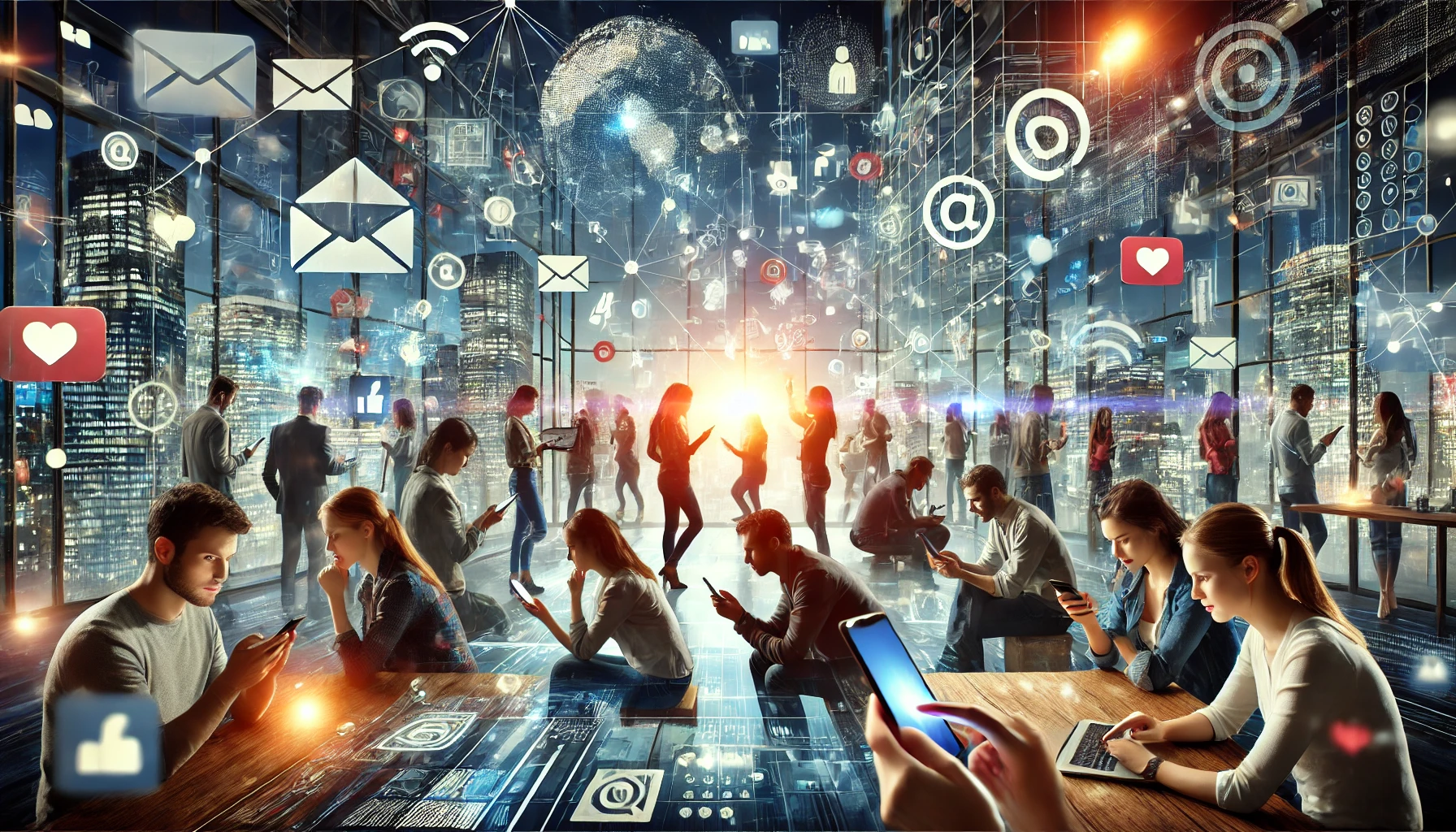Think about this: you send a text to a friend, video call a colleague, or post a photo on Instagram—all within minutes. These are all examples of digital communication, a term that has become inseparable from how we connect in the modern world. But what does it really mean? And how has it reshaped the way we interact personally and professionally? Let’s unpack this concept.
What Is Digital Communication?
Digital communication refers to the exchange of information through digital channels such as emails, messaging apps, social media, and video conferencing tools. It’s the process of using technology to connect, share, and collaborate, often in real-time. For example, when you send a voice note via WhatsApp or attend a virtual meeting on Zoom, you’re engaging in digital communication.
This shift from traditional methods, like face-to-face conversations and handwritten letters, to digital platforms has revolutionized how we interact, making communication faster, more efficient, and accessible.
How Digital Communication Works
Digital communication relies on technology to transmit information. It uses devices like computers, smartphones, or tablets to convert messages into digital signals. These signals are sent over networks and reassembled on the receiving end—making the process seamless and almost instantaneous.
Imagine emailing a colleague with a detailed project update. The message travels through servers as data packets, reaches the recipient, and is displayed on their screen as text. This level of speed and accuracy is what makes digital communication so powerful.
Types of Digital Communication
Digital communication comes in many forms, each serving specific purposes. Let’s take a closer look at the most common types and their applications:
Text-Based Communication
Text messaging, emails, and instant messaging tools like Slack or Microsoft Teams dominate both personal and professional communication. These tools are perfect for quick updates or detailed conversations. For example, you might use Slack to coordinate with a team about deadlines or email a vendor about delivery details.
Social Media Platforms
Social media platforms like Facebook, Instagram, LinkedIn, and TikTok have transformed how people interact. Social media isn’t just about personal connections but also about creating professional networks and marketing opportunities. Imagine a business promoting its products on Instagram or a professional sharing insights on LinkedIn—these platforms facilitate meaningful connections.

Video Communication
Video platforms like Zoom and Google Meet are essential for virtual meetings, online learning, and even social gatherings. Picture this: you’re in a virtual classroom, raising questions with the professor, or conducting a presentation to clients from different time zones. Video communication enables real-time, face-to-face interaction without physical travel.
Voice Communication
Voice communication, including VoIP services like Skype or voice notes in apps like WhatsApp, provides a personal touch. It’s especially useful when tone or emotion is vital, such as leaving a detailed voice message for a team member or catching up with a family member who prefers hearing your voice.
Collaboration Tools
Platforms like Google Workspace, Microsoft Teams, and Trello are specifically designed to support teamwork. Imagine a situation where team members from different locations work on the same document simultaneously, sharing ideas and edits in real time. These tools make collaboration not just possible but seamless.
Blogs and Websites
Blogs and websites offer a unique way to share information, ideas, and resources. For instance, if you’re writing about how to make a speech longer, a blog can serve as a platform to provide helpful insights to readers worldwide.
Examples of Digital Communication in Everyday Life
Digital communication is everywhere, shaping our daily routines. Consider these examples:
- Workplace Collaboration: A team uses Slack for real-time updates, emails to share detailed project plans, and Trello to assign and track tasks. They then jump on a Zoom call for a quick brainstorming session. Each tool serves a specific purpose, keeping the workflow organized and efficient.
- Social Interaction: You post vacation photos on Instagram, respond to a friend’s Facebook comment, and later share a TikTok video with your sibling. These platforms allow you to connect, express yourself, and maintain relationships despite physical distance.
- Education and Learning: A high school student attends online classes via Google Meet, accesses lecture notes on a learning management system, and submits assignments through email. At the same time, their parent is participating in a work-related webinar.
- Healthcare Services: Patients book appointments through apps, consult doctors via telemedicine platforms, and receive lab results directly in their emails.
These examples highlight how digital communication enhances convenience, connectivity, and efficiency across all aspects of life.
The Benefits of Digital Communication
Digital communication offers numerous advantages that make it indispensable in today’s interconnected world, revolutionizing how we live, work, and interact by enabling instant communication, fostering global collaboration, and providing tools that bridge physical distances.
1. Breaking Down Barriers
It connects people across the globe, making it easy to stay in touch with loved ones, collaborate with international colleagues, or even attend virtual conferences. The ability to communicate instantly over vast distances has created opportunities that were unimaginable a few decades ago.
2. Speed and Convenience
Unlike traditional methods, digital communication tools ensure that messages are delivered almost instantly. Whether it’s sending a quick text, sharing a live video, or hosting a real-time webinar, the level of convenience offered by digital tools is unparalleled.
Challenges in Digital Communication
Of course, like any tool, digital communication isn’t without its challenges. Miscommunication is common, especially in text-based interactions, where tone and emotion can be lost. Over-reliance on digital tools can also lead to issues like “Zoom fatigue” or social isolation. Additionally, ensuring privacy and security is critical. Sharing sensitive information online can pose risks, so using secure platforms and following best practices is essential. For professional settings, check out these communication strengths and weaknesses to improve your approach.
How Digital Communication Shapes the Future
The future of digital communication looks promising, with innovations such as artificial intelligence (AI), augmented reality (AR), and 5G networks enhancing connectivity. Imagine AI-powered chatbots that not only respond to queries but also predict user needs. Similarly, AR can create immersive experiences for virtual meetings, bringing digital communication closer to reality.
For further insights on evolving communication methods, consider exploring how social media affects relationships for a broader perspective.
These advancements will continue to shape how we communicate, making interactions even more efficient, personalized, and impactful.
Digital communication isn’t just a trend—it’s a necessity. Whether for personal use or professional growth, it connects us in ways unimaginable just a few decades ago. By embracing its tools and understanding its nuances, we can communicate more effectively and stay connected in an ever-evolving digital world.




